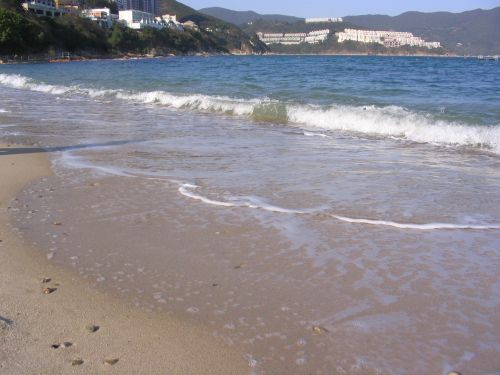Why are waves always parallel to the shore on approaching the seashore?
Why are waves always parallel to the shore on approaching the seashore?
LEE Boon-ying
On approaching the seashore, why are waves always parallel to the shore (no matter what the orientation of the shoreline is)?

We know that waves are mainly driven by the wind. However, the wind does not always blow straight in towards the shore. Out in the ocean, it may be blowing from every direction. The waves we see at the shore are those that are travelling more or less in our direction. Otherwise, we would never see them.
So, the waves that we see do not normally come straight in, i.e. they approach at an angle to the shoreline. The question then is: how does a wave know when it is approaching the shore, change its direction, and become parallel to the shore?
Let's consider a wave that is coming at an angle, with the shoreline to its left. The part of the wave to hit shallow water and scrape bottom will be its left side. This side will be slowed down because of friction, while the middle and right side will continue marching at the original speed. This results in the wave turning to the left, i.e. towards the shore. When the middle and right side hit shallow water, they too will slow down because of friction. Thus, the whole wave gradually turns to the left - until it becomes parallel to the shore.
On approaching the shore, waves break because of the same friction effect. When a wave nears the shore, its bottom is slowed down so much that its top overruns it and falls with a crash, churning up a line of foam.
Reference:
[1] R.L. Wolke, What Einstein didn't know, Dell Publishing, 1997.
[1] R.L. Wolke, What Einstein didn't know, Dell Publishing, 1997.